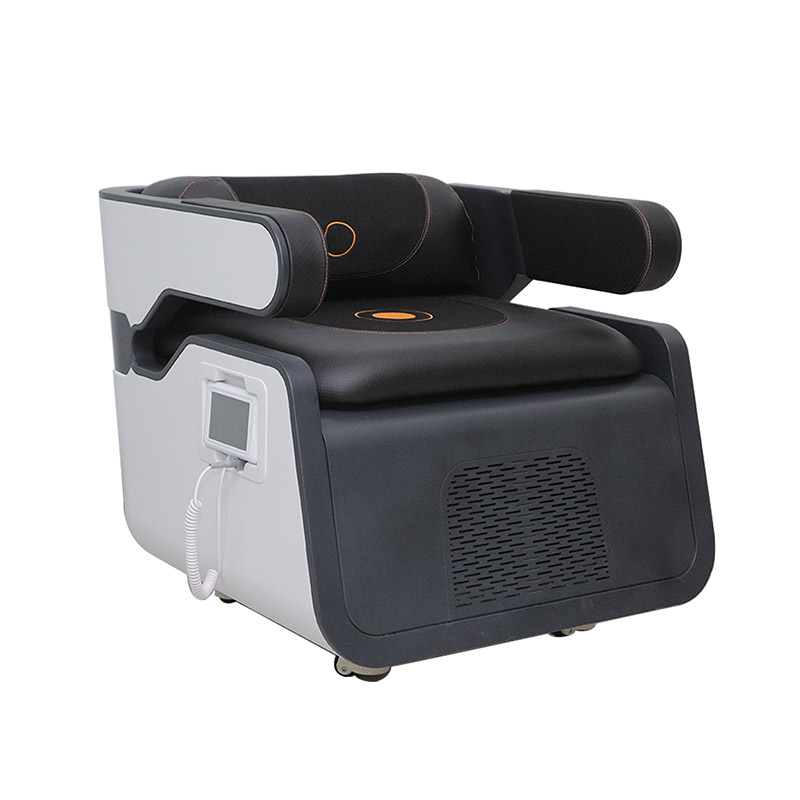
EMS Chair is a great option for women of any age who desire a non-invasive solution for urinary incontinence and improvement in their quality of life. Due to factors such as the body’s normal aging, childbirth or menopause, the pelvic floor muscles decondition and insufficiently support the pelvic organs. These factors directly correlate with urinary incontinence.

How does the EMS Chair work to strengthen the pelvic floor muscles? Treatment pelvic floor muscle directly, and doesn’t require neuromuscular control, so the muscle can contract far more than it would consciously, creating effective results that could not be achieved using manual kegel exercise alone, says the brand. Simply put, it is advanced technology accelerated muscle stimulation.
High intensity focused electric magnetic technology also triggers the body’s natural production process to create new muscle fibres and proteins, which further strengthens and tones the pelvic floor and improves the neuromuscular links between the brain and the bladder, which helps to aid the symptoms of urge incontinence. The 30-minute treatment is suitable for women and men of any age and is performed while the client is fully clothed in a completely non-invasive and pain-free manner. A course of six-to-eight treatments is recommended for optimum results, but the brand says that some clients have experienced results from just the first treatment.

EMS Chair uses high intensity focused electro-magnetic technology to provide accelerated muscle stimulation to the pelvic floor area. It offers a targeted and accelerated approach to strengthening and toning the pelvic floor, improving the neuromuscular links between the brain and the bladder, which help significantly to aid the symptoms of urinary incontinence.






EMSella Perlvic magic chair applications:
①Postpartum rehabilitation;
②Potential injury of pelvic floor muscles(childbirth, exercise, illness).
③Urinary dysfunction: urinary incontinence (stressful urinary incontinence, urgent urinary incontinence, mixed urinary incontinence, frequency of urination, urgency of urination), overactive bladder;
④Defecation dysfunction: constipation, fecal incontinence;
⑤Sexual dysfunction: male erectile dysfunction, female lack of sexual pleasure;
⑥Chronic pelvic pain: interstitial cystitis, vaginismus, male prostatalgia.


About Urinary Incontinence:
Urinary incontinence is defined as the involuntary leakage of urine. This might be a result of weak pelvic floor muscles since pelvic floor muscles play an important role in supporting pelvic organs and controlling continence. There are three different types of urinary incontinence: → Stress incontinence: when there is exerted pressure on the bladder causing leakage. → This can be caused by coughing, laughing, sneezing, or exercising. → Urge: the sudden, intense urge to urinate frequently. → Mixed incontinence: a combination of both stress and urge incontinence. → Physiological changes can contribute to the development of urinary incontinence; changes such as vaginal delivery, menopause, and aging can decondition pelvic floor muscles. In order to improve symptoms, it is important to strengthen these muscles. Possible ways to improve your condition may include lifestyle changes.
Working principle:
EMS Chair uses high intensity focused electro-magnetic technology to provide accelerated muscle stimulation to the pelvic floor area. It offers a targeted and accelerated approach to strengthening and toning the pelvic floor, improving the neuromuscular links between the brain and the bladder, which help significantly to aid the symptoms of urinary incontinence.






































